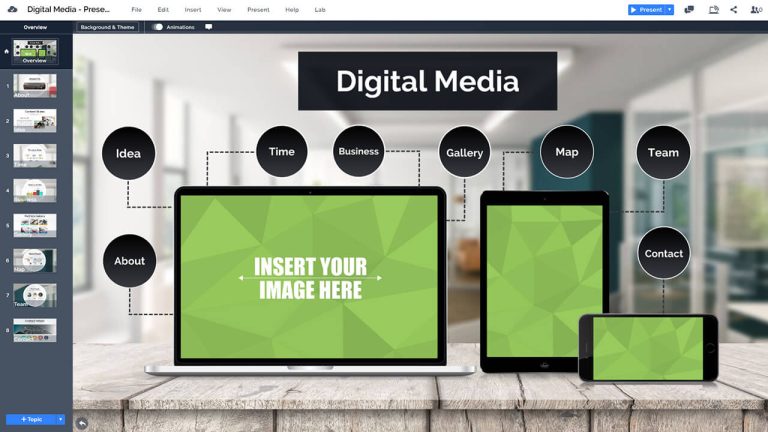Representation Vs Presentation: Which Is Better For You?
When it comes to expressing ideas, there are two important concepts to consider: representation vs presentation. These terms often pop up in discussions about art, media, and communication. But what exactly do they mean? Well, let’s dive in and explore the difference between representation and presentation in a fun and engaging way!
Representation is like a mirror that reflects the essence of something or someone. It’s all about capturing the true nature or characteristics of a subject. Imagine you’re drawing a picture of your best friend. You want to make sure your drawing looks like them, right? That’s representation! It’s about staying true to the original and showing it in an accurate and authentic way.
On the other hand, presentation is like giving a performance on a stage. It’s about how you showcase or deliver something to your audience. Let’s say you’re giving a class presentation. You may use colorful slides, engaging visuals, and enthusiastic gestures to make your points impactful and memorable. That’s presentation! It’s about the style and manner in which you present your ideas to captivate and engage your audience.
Now that we know the difference between representation and presentation, it’s time to dig deeper and explore how they shape our understanding of various forms of expression. So, join me on this exciting journey as we unravel the fascinating world of representation vs presentation!
When it comes to communication, understanding the difference between representation and presentation is crucial. While representation focuses on conveying an idea or concept accurately, presentation emphasizes the delivery and visual appeal. Both play important roles, but they have distinct features. In representation, data accuracy and authenticity are key, whereas in presentation, visual design and storytelling take center stage. By recognizing their unique strengths, you can effectively communicate your message in various contexts.
Key Takeaways: Representation vs Presentation
- Representation is about accurately depicting or reflecting something, while presentation focuses on how information is delivered or displayed.
- Representation emphasizes content and substance, while presentation emphasizes style and visual appeal.
- Representation is about conveying the meaning and essence of something, while presentation is about creating an impactful and engaging experience.
- Representation can involve various forms, such as words, images, or data, while presentation can involve design, formatting, and delivery techniques.
- Both representation and presentation are important in effectively conveying information and ideas.
Comparing Representation vs Presentation: Choosing the Right Approach
Representation and presentation are two essential elements in various aspects of our lives, from art and design to communication and technology. While they may sound similar, they have distinct characteristics and purposes. Understanding the differences between representation and presentation is crucial in determining the most suitable approach for different scenarios. In this article, we will explore the concepts of representation and presentation, compare their key features, discuss user experiences, evaluate their pros and cons, and provide a final verdict on which approach is better.
Overview of Representation
Representation refers to the act of portraying or depicting something through various means of expression. It involves the translation of ideas, concepts, or data into visual, auditory, or textual forms. In the digital realm, representation plays a crucial role in conveying information, creating user interfaces, and engaging audiences.
When it comes to representation, one prominent example is data visualization. Through charts, graphs, and infographics, data can be transformed into visually appealing and understandable forms. Representation enables users to interpret and analyze data more efficiently, facilitating decision-making processes and enhancing overall comprehension.
In the world of design, representation is also vital. Architects, for instance, use blueprints and 3D models to represent their vision of buildings and structures. These representations allow clients, contractors, and other stakeholders to visualize and understand the design concepts before actual construction begins.
Overview of Presentation
Presentation, on the other hand, focuses on the act of showcasing or displaying information in a manner that captivates and engages the audience. It involves the use of visual aids, storytelling techniques, and persuasive communication to convey messages effectively.
When we think of presentation, public speaking and slide decks often come to mind. Presenters utilize tools like PowerPoint or Keynote to create visually appealing slides that support their spoken words. These presentations can include images, videos, and animations to enhance the overall impact.
In the corporate world, presentations play a significant role in marketing, sales, and business meetings. A well-crafted presentation can effectively communicate a company’s value proposition, captivate potential clients, and convey complex ideas in a concise and engaging manner.
Key Features Compared: Representation vs Presentation
When comparing representation and presentation, it is essential to examine their key features and how they differ in various aspects. Let’s delve into some of these features:
1. Purpose
Representation primarily serves the purpose of conveying information and facilitating understanding. It focuses on accuracy, clarity, and usability. The goal is to present data or ideas in a way that is accessible and easy to comprehend.
On the other hand, presentation aims to engage, persuade, and entertain the audience. It emphasizes storytelling techniques, visual appeal, and effective communication. The objective is to captivate the viewers’ attention and leave a lasting impression.
2. Design
In terms of design, representation tends to prioritize functionality and usability. The focus is on organizing and presenting information in a clear and logical manner. Visual elements are utilized to enhance comprehension rather than purely for aesthetic purposes.
Presentation design, on the other hand, incorporates aesthetics and visual appeal as paramount components. The use of color, typography, imagery, and animations is essential to create visually stunning slides or visuals that captivate the audience and leave a memorable impression.
3. Audience Interaction
Representation often involves minimal audience interaction. The emphasis is on providing information or data that the audience can absorb and analyze. Interactive elements, such as tooltips or filters, may be included to facilitate exploration and customization in data visualization scenarios.
Presentation, on the other hand, encourages audience interaction and engagement. Presenters may use techniques like audience polls, Q&A sessions, or interactive multimedia components to involve the audience actively. This interaction helps create a dynamic and captivating experience.
4. Context and Usage
Representation finds its applications in various fields where conveying information or data is crucial. It is extensively used in data analysis, scientific research, education, design, and other disciplines that require accurate representation of concepts or information.
Presentation is employed in scenarios where communication and persuasion are vital. It is commonly used in sales and marketing presentations, public speaking events, lectures, and any situation where delivering captivating content is essential.
5. Emphasis on Content vs Delivery
Representation places a significant focus on the content itself. The clarity, accuracy, and relevance of the information take precedence over the delivery method or visual appeal. The goal is to ensure that the content can be easily interpreted and understood by the intended audience.
Presentation, on the other hand, places emphasis on the delivery method and visual impact. While the content is still crucial, the goal is to create a captivating and memorable experience for the audience. Visual aids, storytelling techniques, and effective communication skills are essential in delivering a compelling presentation.
User Experience
The user experience of representation and presentation can vary significantly based on the context and purpose. Let’s explore the user experience of each approach:
User Experience of Representation
Users engaging with representations often expect clarity, ease of understanding, and usability. Whether they are analyzing data visualizations, exploring user interfaces, or interpreting architectural blueprints, the user experience revolves around comprehending the presented information efficiently.
The quality of the user experience in representation is heavily influenced by factors such as data accuracy, intuitiveness of interfaces, and the ability to customize or filter visualizations. When done well, representation can enhance decision-making processes, enable efficient data analysis, and facilitate understanding of complex concepts.
User Experience of Presentation
The user experience in presentation is centered around engagement, captivation, and the impact of the message delivered. Presentations need to capture the audience’s attention, maintain their interest throughout, and leave a lasting impression.
The quality of the user experience in presentation depends on factors such as the delivery skills of the presenter, the design and visual appeal of the slides or visuals, and the effectiveness of storytelling techniques employed. A well-executed presentation creates a dynamic and engaging experience for the audience, enabling them to connect with the message being delivered.
Pros and Cons
Pros and Cons of Representation
Pros:
- Facilitates understanding and comprehension of information
- Enables effective data analysis and decision-making
- Allows for customization and exploration in interactive representations
Cons:
- May lack the visual impact and engagement of presentations
- Can be challenging to create accurate representations of complex concepts
- May require specialized knowledge or skills to interpret certain types of representations
Pros and Cons of Presentation
Pros:
- Captivates and engages the audience through storytelling and visual aids
- Creates a memorable and impactful experience
- Allows for interactive audience participation
Cons:
- Visual appeal may overshadow the content in some cases
- Relies heavily on the delivery skills and charisma of the presenter
- May not provide the same level of detailed information as representations
Price Comparison
When it comes to the price comparison between representation and presentation, it is essential to consider the specific tools, software, or services required for each approach. The costs can vary widely depending on the complexity and sophistication of the tools used.
For representation, the costs may include data visualization software, design tools, or specialized software for creating 3D models or animations. Depending on the requirements, these tools can range from free and open-source options to more expensive commercial software.
Presentation costs often involve subscription fees or one-time payments for presentation software like Microsoft PowerPoint or Apple Keynote. Additional costs may arise if professional design services or multimedia production are required for creating visually impactful slides or visuals.
Comparison Table: Representation vs Presentation
| Feature | Representation | Presentation |
|---|---|---|
| Purpose | Conveying information and facilitating understanding | Engaging, persuading, and entertaining the audience |
| Design | Functional and focused on usability | Aesthetic and visually appealing |
| Audience Interaction | Minimal interaction, with a focus on comprehension | Encourages active engagement and interaction |
| Context and Usage | Data analysis, scientific research, design | Sales, marketing, public speaking |
| Emphasis on Content vs Delivery | Content and information accuracy | Delivery method and visual impact |
Please note that the table above provides a simplified overview of the main features and differences between representation and presentation. The specific characteristics can vary depending on the context and tools used.
Which is Better: Representation or Presentation?
Choosing between representation and presentation depends on the specific goals, context, and audience of the given situation. Both approaches have their strengths and weaknesses, and the decision ultimately comes down to the intended outcome and the preferences of the individuals involved.
In scenarios where conveying complex information, facilitating understanding, and enabling data analysis are paramount, representation is the preferred approach. Data visualization, technical diagrams, and architectural blueprints are examples where representation shines.
On the other hand, when the goal is to captivate, engage, and persuade an audience, presentation is the way to go. Sales pitches, marketing campaigns, and public speaking events benefit greatly from effective presentation techniques that leave a lasting impression on the audience.
Reasons to Choose Representation:
- Focus on accuracy and clarity of information
- Efficient data exploration and analysis
- Prioritization of information usability and comprehension
Reasons to Choose Presentation:
- Ability to captivate and engage the audience
- Opportunity to deliver a memorable and impactful experience
- Effective communication and persuasion through storytelling techniques
In the end, it is crucial to consider the objectives, content, and the preferences of the intended audience when deciding whether to opt for representation or presentation. Both approaches have their place and play important roles in various domains.
Frequently Asked Questions
What is the difference between representation and presentation?
Representation and presentation both involve conveying information, but they have distinct meanings. Representation refers to the depiction or portrayal of something, usually through a medium like art, writing, or data. It focuses on capturing the essence or meaning of the subject matter. On the other hand, presentation refers to the act of displaying or showing information or ideas to an audience. It is more about how the information is organized, structured, and delivered.
Representation is concerned with the content, while presentation focuses on the delivery and format. Representation answers the question “What is being conveyed?” while presentation addresses “How is it being conveyed?” Essentially, representation is about the substance, while presentation is about the style.
How do representation and presentation apply in visual arts?
In visual arts, representation refers to the artist’s depiction of a subject matter, such as a person, object, or scene. It involves the artist’s interpretation and expression of the subject, capturing its essence or meaning. For example, a painting of a landscape can represent the artist’s emotional response to nature.
Presentation, on the other hand, involves how the artwork is presented to an audience. This includes factors such as the arrangement, framing, lighting, and context in which the artwork is exhibited. A well-curated gallery space, for instance, enhances the presentation of artwork and influences viewers’ perception of it.
How does representation differ from presentation in data analysis?
In data analysis, representation refers to the way data is visually presented or organized to make it understandable and meaningful. This includes charts, graphs, and other visualizations that allow patterns and insights to be easily grasped. Effective representation helps in communicating complex data to a wider audience.
Presentation, on the other hand, refers to how the data analysis findings are presented to stakeholders or decision-makers. It involves selecting the most relevant information, creating a narrative, and delivering it in a clear and engaging manner. A well-designed presentation enhances the understanding and impact of the data analysis results.
How do representation and presentation apply in public speaking?
In public speaking, representation refers to the content of the speech, including the ideas, arguments, and evidence presented. It involves conveying information accurately, persuasively, and in a way that connects with the audience. The quality of representation determines how well the message is understood and accepted.
Presentation, on the other hand, concerns how the speaker delivers the speech. This includes factors such as body language, vocal tone, use of visual aids, and overall stage presence. Effective presentation skills capture the audience’s attention, engage their emotions, and enhance the speaker’s credibility.
How do representation and presentation differ in marketing?
In marketing, representation refers to how a product or brand is portrayed to the target audience. This includes advertising, branding, and promotional campaigns that establish the desired image and associations. Effective representation creates a perception that resonates with the target market, influencing their buying decisions.
Presentation, on the other hand, refers to how the marketing message is delivered or communicated. This includes the design, layout, and format of marketing materials, as well as the channels used for distribution. A well-designed website or visually appealing packaging can enhance the presentation of a product or brand, attracting and engaging potential customers.

Representation Vs Presentation : ToxicChats Ep 35
Summary
So, to summarize what we’ve learned about “representation vs presentation”! Representation means showing different types of people and ideas in a fair and accurate way. It helps us understand and appreciate the diversity in our world. On the other hand, presentation focuses more on how something is presented or packaged, like through images, TV shows, or movies. It can sometimes lead to stereotypes or biased views.
Representation is important because it allows everyone to be seen and heard, no matter their race, gender, or background. It helps create a more inclusive society by giving a voice to those who have been traditionally underrepresented. When we see diverse characters and storylines in media, it broadens our understanding of the world and encourages empathy and acceptance.
Moreover, we should be critical of the media we consume. By asking questions and thinking carefully about what we see, we can analyze if the presentation aligns with fair and accurate representation. We can encourage and support media that portrays diversity and challenges stereotypes. By doing so, we become part of the movement for positive change, shaping a world that celebrates the uniqueness of every individual. Remember, together, we can make a difference!


